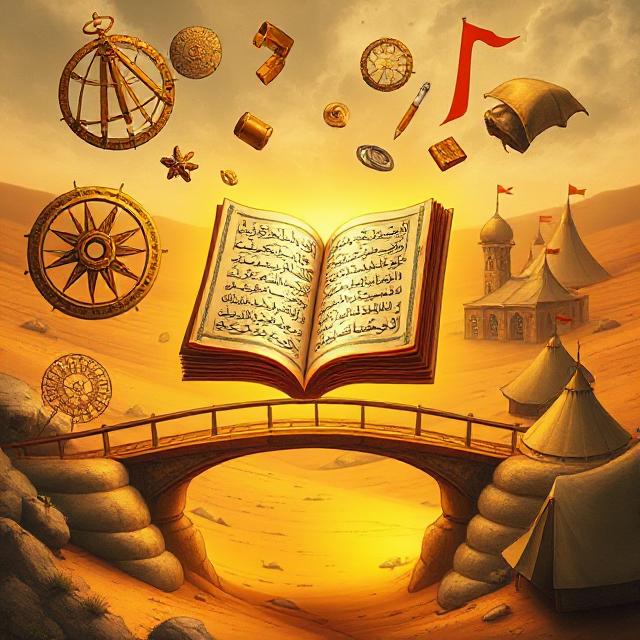
Table of Contents
Islamic Golden Age Thinkers: Al-Farabi to Averroes and the Legacy of Intellectual Revival
“Islamic Golden Age thinkers” is more than a category—it’s a portal into a transformative era when science, philosophy, medicine, and metaphysics flourished across the Islamic world. Spanning the 8th to the 13th century, this golden age bridged East and West, translated Aristotle into Arabic, pioneered hospitals and optics, and asked some of the most enduring philosophical questions.
This period was defined by polymaths—philosophers, scientists, theologians, and physicians all in one. Their insights not only preserved classical knowledge but extended it, influencing both the Islamic world and medieval Europe. Let’s trace the arc of this intellectual renaissance through three giants: Al-Farabi, Avicenna (Ibn Sina), and Averroes (Ibn Rushd).
I. The Historical Context: Baghdad and the House of Wisdom
The Islamic Golden Age began under the Abbasid Caliphate, especially during the reign of Caliph Harun al-Rashid and his son Al-Ma’mun. With Baghdad as its epicenter, the famed Bayt al-Hikma (House of Wisdom) became the beacon of translation and scholarship.
Here, Greek philosophical texts were translated into Arabic, blending Hellenistic thought with Islamic theology. This translation movement ignited the philosophical debates and scientific advances that would follow.
II. Al-Farabi: The Second Teacher After Aristotle
Abu Nasr Al-Farabi (c. 872–950) was called the “Second Teacher”—second only to Aristotle. A philosopher, logician, and political theorist, Al-Farabi sought to reconcile Platonic and Aristotelian philosophy with Islamic monotheism.
Key Contributions:
- Political Philosophy: In The Virtuous City, Al-Farabi likens the ideal society to a healthy organism where each part plays its role.
- Logic and Epistemology: He developed a system that integrated Greek logic with Islamic theology, setting a foundation for later scholars.
- Metaphysics: Al-Farabi explored the emanation of the universe from a single, First Cause—God—through a hierarchical chain of intelligences.
His belief in the philosopher-king and his emphasis on reason as a path to spiritual perfection deeply influenced later Islamic and Christian thought.
III. Avicenna (Ibn Sina): The Master of Medicine and Metaphysics
Avicenna (c. 980–1037) was a Persian polymath whose works would define Islamic and European thought for centuries. His Canon of Medicine was the standard textbook in Europe until the 17th century.
Philosophical Contributions:
- Essence and Existence: Avicenna distinguished between essence (what something is) and existence (that something is), a subtle but powerful idea that influenced Thomas Aquinas and Scholasticism.
- Necessary Being: He argued for the existence of a Necessary Existent (God)—a being whose essence is existence.
- Soul and Psychology: Avicenna’s “Floating Man” thought experiment explored self-awareness and the existence of the soul.
Avicenna viewed philosophy and religion as paths to the same truth, though accessible at different levels of understanding.
IV. Averroes (Ibn Rushd): The Commentator and Rationalist
Averroes (1126–1198), born in Muslim Spain (Al-Andalus), is known in Latin as “The Commentator” for his extensive commentaries on Aristotle. His aim was to defend philosophy from theological attack and assert the compatibility of faith and reason.
Key Ideas:
- Double Truth Doctrine: Averroes suggested that there can be two truths: one accessible to reason (philosophy) and one revealed through scripture (theology).
- Defense of Philosophy: In The Incoherence of the Incoherence, he refuted Al-Ghazali’s attack on rationalism.
- Unity of Intellect: He proposed that all humans share a single universal intellect—an idea controversial in both Islamic and Christian circles.
Though eventually marginalized in the Islamic world, Averroes became a cornerstone of the European Enlightenment and shaped secular thought in the West.
V. The Broader Impact of Islamic Golden Age Thinkers
Scientific Advancements:
- Mathematics: Al-Khwarizmi’s algebra laid the foundation for modern math.
- Astronomy: Observatories in Baghdad and Maragha advanced planetary models.
- Medicine: Hospitals, surgical tools, and medical ethics were refined.
Cross-Cultural Transmission:
Islamic Golden Age thinkers transmitted and transformed Greek knowledge. When Europe rediscovered Aristotle, it was through Arabic translations and commentaries that had passed through Muslim hands.
VI. Decline and Legacy
The decline of the Islamic Golden Age came through a mix of political fragmentation, Mongol invasions, and the rising dominance of orthodox theology over philosophy. Thinkers like Averroes were exiled or their works banned.
Yet their influence persisted:
- Latin Averroism inspired thinkers like Siger of Brabant.
- Avicenna’s metaphysics endured in Catholic scholasticism.
- Al-Farabi’s political philosophy lived on in Renaissance humanism.
Today, the legacy of Islamic Golden Age thinkers challenges modern narratives about intellectual stagnation in medieval Islam. They prove that faith and reason, East and West, can converge to illuminate truth.
VII. Conclusion: Minds That Bridged Worlds
From Al-Farabi’s rational metaphysics to Averroes’s fiery defense of reason, Islamic Golden Age thinkers shaped the philosophical scaffolding of three continents. They were not mere transmitters of knowledge but bold innovators—curious minds who expanded the known and dared to connect the divine with the rational.
Their journey is a testament to what happens when culture, inquiry, and openness converge—a timeless reminder that golden ages are not relics of the past but blueprints for the future.
